Key takeaways:
- Selective mutism is a complex condition rooted in anxiety, requiring empathy and understanding for effective support.
- Gentle encouragement and safe environments significantly help individuals with selective mutism express themselves.
- Personal narratives and sharing experiences foster empathy and understanding, bridging gaps between individuals.
- Advocating for awareness can transform misconceptions about selective mutism and promote supportive community actions.

Understanding Selective Mutism
Selective mutism is often misunderstood as mere shyness, but it’s so much more complex. I remember a friend of mine who struggled silently in social situations, her anxiety palpable in the room. Have you ever witnessed a child freeze in an environment where they should feel safe? It’s heartbreaking to see them grapple with an overwhelming fear that keeps them from expressing themselves, even when they desperately want to connect.
The condition typically manifests in children but can persist into adulthood if left unaddressed. I once spoke to a young woman who described her experience of wanting to contribute in class but felt paralyzed by the fear of judgment. It made me realize that it’s not just about not speaking; it’s about the internal battles that often go unnoticed. How can we help others navigate such a silent struggle?
Understanding selective mutism requires empathy and patience. When I volunteered at a local school, I learned that gentle encouragement can make a significant difference. Each small victory—a whispered word or a timid smile—reflects a huge step for someone living with this condition. Isn’t it incredible how the smallest gestures can foster significant progress?
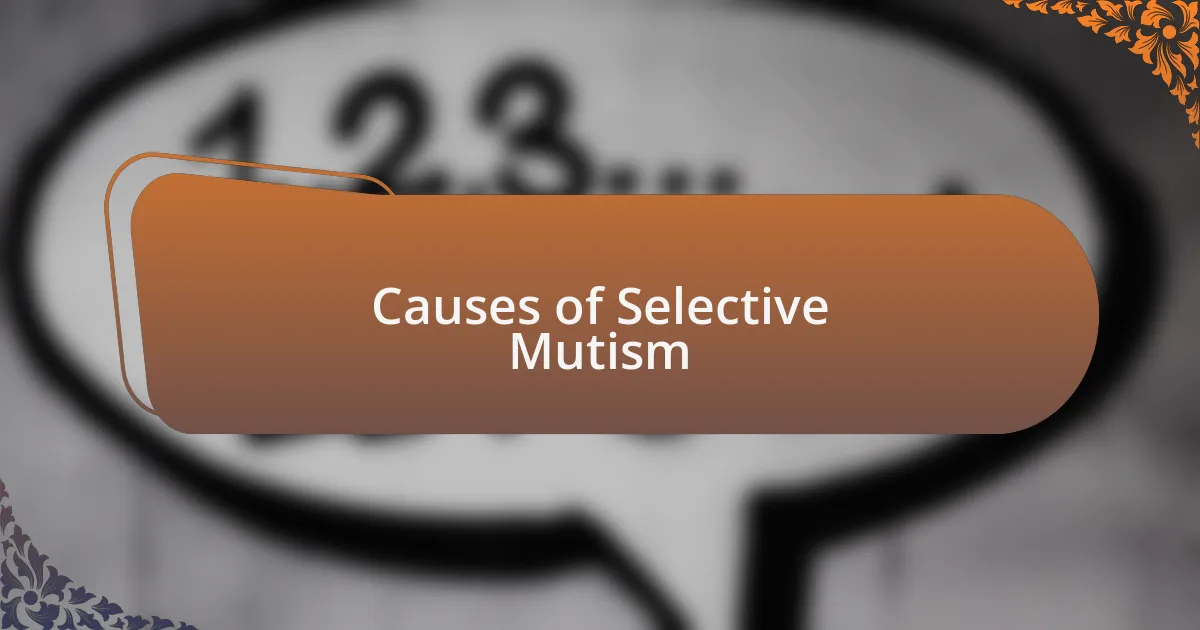
Causes of Selective Mutism
The causes of selective mutism are multifaceted and often intertwined with anxiety disorders. From my observations in various support groups, I’ve seen that many children with selective mutism come from environments that may inadvertently heighten their stress levels. For instance, a parent’s overly cautious behavior can create a bubble of anxiety, making the child feel that the world outside is intimidating. Have you ever noticed how children can perfectly mirror the emotions of those around them?
Genetics also play a role in the development of selective mutism. I recall a case where a young boy struggled to speak in social settings, and upon talking to his family, it became evident that his mother had faced similar challenges as a child. It’s fascinating to contemplate how our backgrounds shape our present, isn’t it? Understanding these familial patterns can help identify strategies for breaking the cycle.
Environmental factors can also contribute. I remember a parent sharing how their child thrived in a familiar, nurturing setting but would completely withdraw in new or noisy environments. This highlights how context matters; it makes me wonder how many young lives could be transformed with simple adjustments in their surroundings. Can we create spaces that nurture confidence rather than fear?
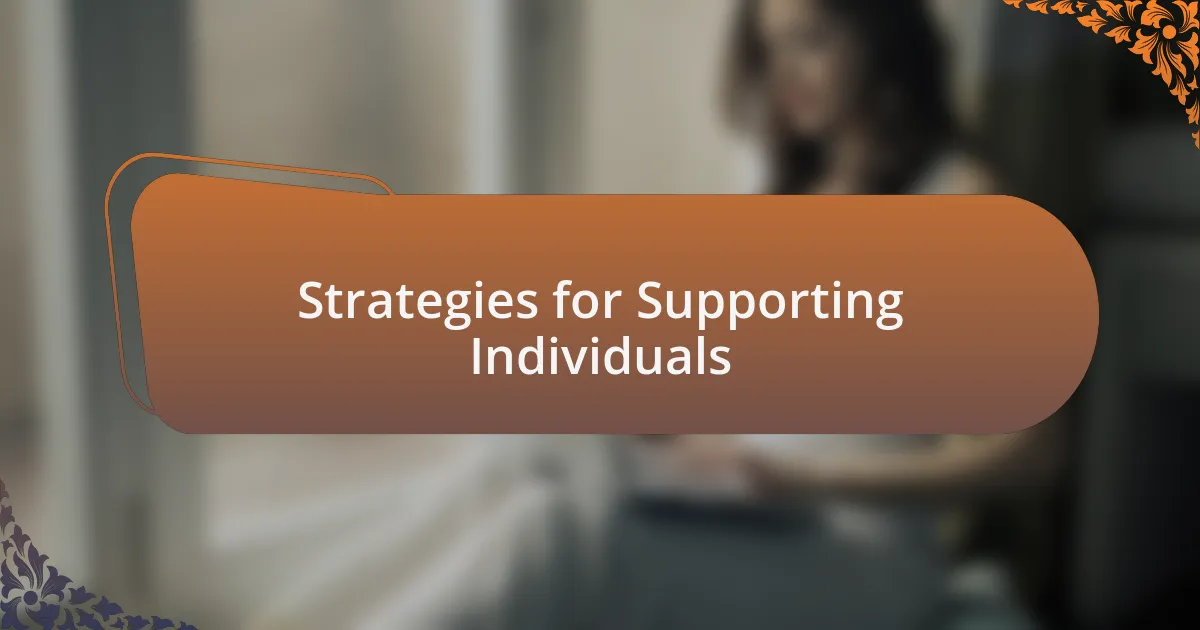
Strategies for Supporting Individuals
Creating a supportive environment for individuals with selective mutism is crucial. I remember the relief I felt when a teacher implemented a “quiet corner” in the classroom, where kids could express themselves at their own pace. This small adjustment empowered students to slowly engage without pressure. Have you ever considered the impact of a calming space in fostering communication?
In social situations, gentle encouragement goes a long way. I once witnessed a parent gradually introduce their child to a small group of peers, promoting interaction through play rather than demanding conversation. This approach not only reduced anxiety but also allowed the child to participate more naturally. Have you thought about how friendship can blossom when there’s no pressure to speak?
Understanding the need for gradual exposure is vital, too. I’ve seen how slowly incorporating new experiences—like a brief visit to a community event—can help build confidence over time. This method mirrors how I once faced my own fears by tackling challenges one step at a time, learning that it’s okay to take baby steps. Isn’t it empowering to recognize that every small victory counts?
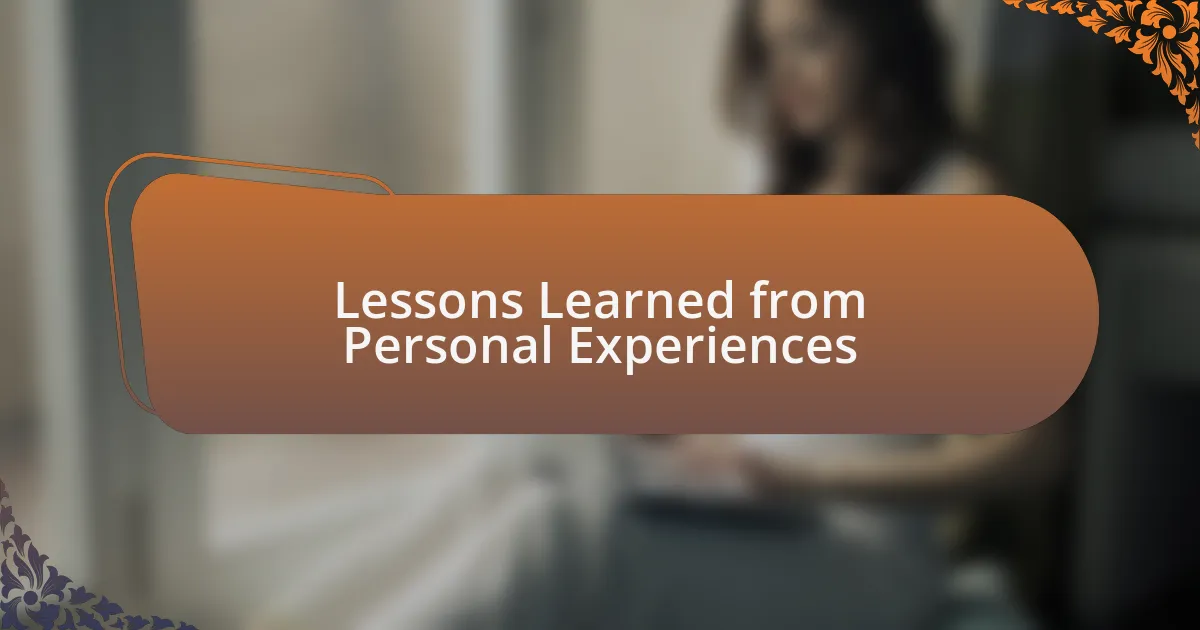
Lessons Learned from Personal Experiences
Thinking back on my experiences, one profound lesson I’ve learned is the power of patience. I recall an instance when I tried to communicate with a friend during a group project. It took me several attempts just to contribute a few words. That moment taught me the importance of allowing space for responses and how everyone’s timeline for communication can look entirely different. Have you ever found yourself waiting for the right moment to express your thoughts?
Another powerful insight revolves around the value of validation. I remember feeling overwhelmingly supported when a mentor acknowledged my struggles with speaking up in class. Hearing someone say, “It’s okay to take your time,” made a significant difference. It highlighted the importance of affirming emotions as a means to foster connection. How often do we truly validate someone’s feelings rather than rushing them to communicate?
Sharing my experiences with selective mutism has also been enlightening. I once opened up to a close friend about my challenges, and I was surprised by the flood of understanding and shared stories that followed. This moment revealed how personal narratives can bridge gaps and foster empathy among individuals. Have you ever realized that simply sharing can be a powerful catalyst for understanding and connection?
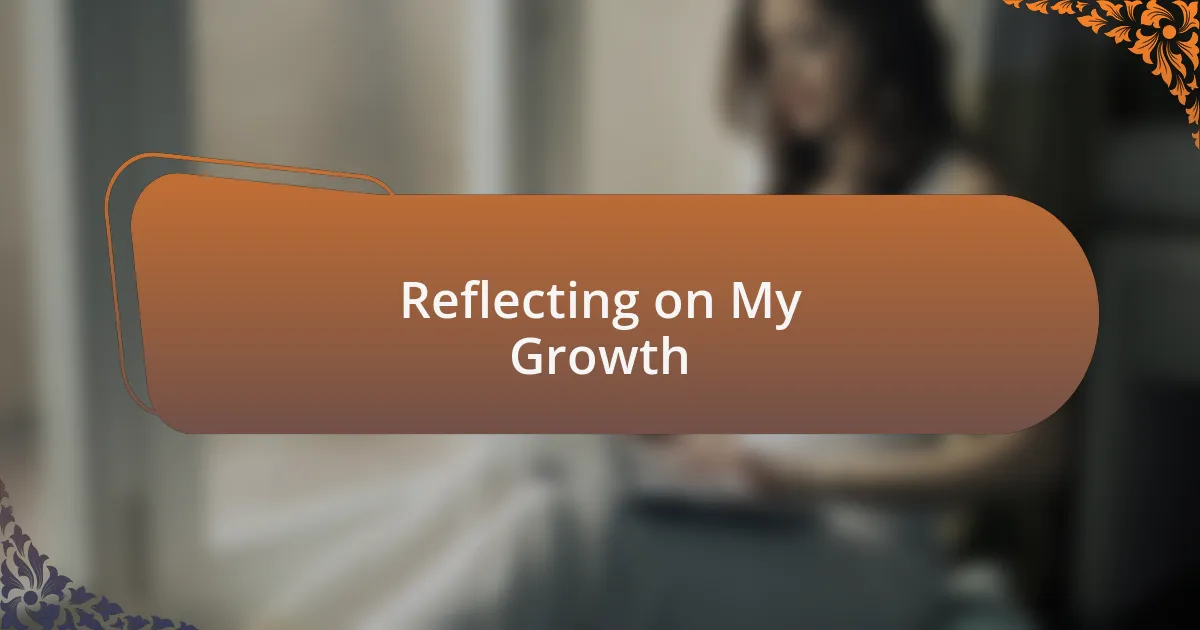
Reflecting on My Growth
Reflecting on my growth, I recognize how essential it has been to embrace vulnerability. There was a time when I hesitated to share my experiences, fearing judgment or disappointment. However, one day, I chose to speak about my challenges during a workshop discussion. The relief I felt afterward was immense, and it taught me that opening up can be freeing. Have you ever noticed how revealing a part of yourself can lead to unexpected support?
Another pivotal moment in my journey came when I learned to interpret silence differently. In the past, I viewed my quietness as a barrier, but over time, I’ve come to see it as a space for introspection. I remember a particularly quiet evening where, instead of feeling isolated, I sat with my thoughts and wrote them down. That experience opened my eyes to the depth of my inner dialogue, transforming silence from a source of anxiety into a canvas for self-discovery. How has silence shaped your understanding of yourself?
As I continue to grow, I find myself more attuned to the nuances of communication. There was an instance when I noticed a classmate struggling to find their voice during a group discussion. I felt compelled to reach out, drawing on my own experiences to encourage them. This interaction not only reinforced my empathy but also reminded me that growth often comes in the form of helping others. Isn’t it fascinating how acts of kindness can propel us forward on our own journeys?
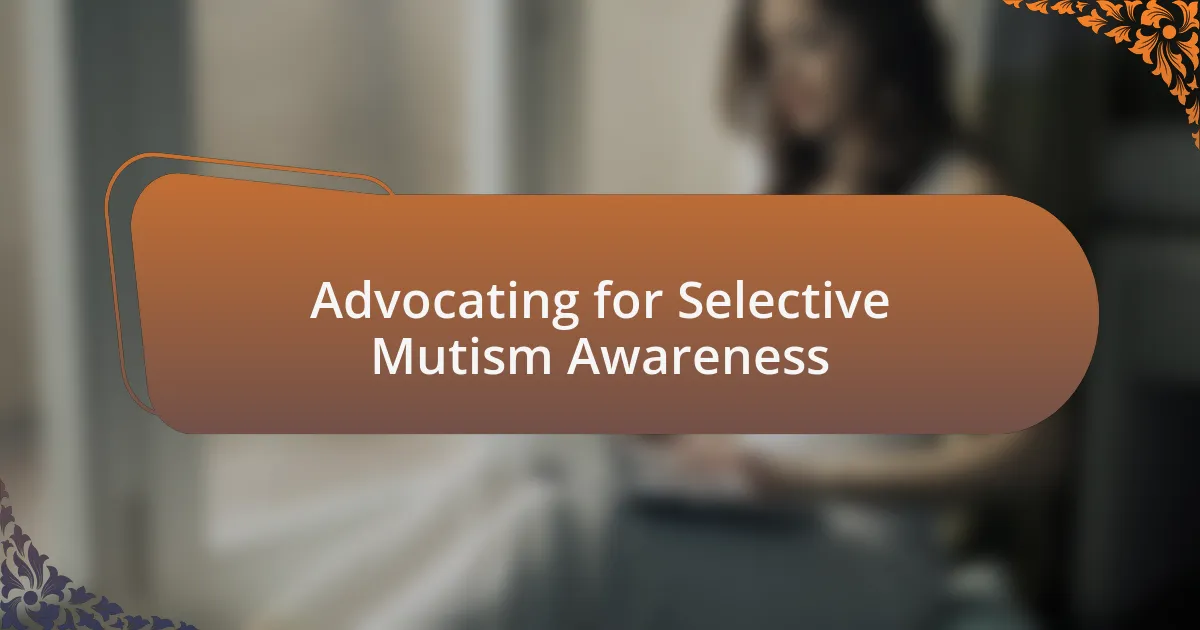
Advocating for Selective Mutism Awareness
Advocating for Selective Mutism Awareness has become a crucial part of my journey. I remember a community event where I shared my story with parents and educators. The determination on their faces as they absorbed my words showed me how vital it is to shed light on selective mutism. When was the last time you considered the impact of your own story?
One memorable experience involved a local school where I conducted a workshop focused on understanding selective mutism. The teachers were surprised to discover the breadth of misconceptions surrounding it. I could sense their eagerness to learn more, and that realization fueled my passion for advocacy. It’s fascinating how knowledge can transform attitudes, don’t you think?
As I continued to share my experiences, I realized that anecdotes can bridge the divide between confusion and understanding. Each time I narrate moments from my past—like the fear I felt on the first day of school or the weight of silence in social settings—people begin to connect. Have you ever felt the power of shared stories in fostering empathy? It’s amazing how these exchanges not only spark conversation but also inspire others to advocate for awareness.